Hi Bret, here’s an ABC (Ask Bret Contreras) question for you. Coaches for strength, speed, and power sports often argue about which lifts are best. Typically, they base their opinion off of force, power, and rate-of-force development (RFD) measurements. Are these the end-all-be-all for exercise selection, or is there more to the story? Love your blog by the way! – Nathan
Hi Nathan – I’m glad you asked this question as it’s an important one. Too many coaches laser-in on these data at the exclusion of other important biomechanical data. Examining force, power, and RFD are indeed important, but there are problems with using these data exclusively.
For example, partial squats elicit greater force and power outputs compared to deep squats. Click HERE and HERE and HERE to see more along these lines.
Does this mean we should do partials over deep squats, since they produce greater force and power outputs?
No it does not. Last year, we saw HERE that full ROM curls bested partial curls for hypertrophic and strength adaptations. Last year we also found HERE that full ROM squats transferred better to vertical jump performance than partials. This year we’ve found HERE that deep squats do a better job than partials at eliciting a postactivation potentiation (PAP) effect (i.e. improving vertical jump performance).
Just recently, we’ve found that deep squats are superior to partials for hypertrophic adaptations, knee strength, and squat jump performance compared to partials. Click HERE to read more about this. And just recently we’ve also seen HERE that full ROM knee-dominant exercise greatly outperforms partials for strength and hypertrophy.
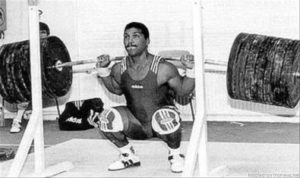 As you can see, focusing solely on force and power can be misleading and lead to inferior programming, and full ROM exercise greatly outperforms partials for strength, power, and hypertrophic adaptations.
As you can see, focusing solely on force and power can be misleading and lead to inferior programming, and full ROM exercise greatly outperforms partials for strength, power, and hypertrophic adaptations.
Mid-thigh clean pulls lead to greater force, power, and RFD measurements than power cleans, hang power cleans, and mid-thigh power cleans. Click HERE to learn more about this.
Does this mean that coaches should employ the mid-thigh clean pull and omit power cleans and hang cleans?
Hex bar deadlifts elicit greater force and power outputs than conventional deadlifts. Click HERE and HERE to learn more.
Should coaches stick with the hex bar and omit standard deadlifts? Does it matter that conventional deadlifts elicit greater hip extension moments and hamstring EMG activation?
Concerning squat variations at 70% 1RM load, the box squat maximizes RFD, the powerlifting squat maximizes force, and the traditional squat maximizes power. Click HERE to learn more about this.
What does this mean? Which variant should we choose then – the one that maximizes force, power, or RFD?
Between jump squats and kettlebell swings, jump squats maximize power production, but kettlebell swings maximize impulse production. Click HERE to learn more. Which one do we go with, the one that produces more power or impulse?
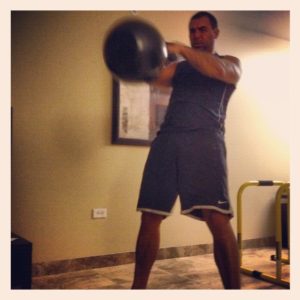 The shrug and calf raise will generate huge levels of force – should all coaches be prescribing them to athletes even though they don’t involve double or triple extension patterns?
The shrug and calf raise will generate huge levels of force – should all coaches be prescribing them to athletes even though they don’t involve double or triple extension patterns?
Going heavier (maxing out) will lead to greater force production, whereas going lighter allows for greater power production. Should we be performing heavy low rep sets for force, lighter explosive sets for power, or somewhere in between for maximal hypertrophy?
Isometric midthigh pulls lead to very high levels of force and RFD. Should we just do those then, or does range of motion matter? Hell, just getting into any mechanically-advantageous position in the power rack and performing isoholds will produce huge force outputs, but coaches intuitively know that isoholds aren’t nearly as effective at full ROM exercise for performance adaptations.
In fact, the most mechanically-advantageous position in an exercise will be the portion that generates the greatest force, power, and RFD outputs assuming that acceleration doesn’t slow down and the load is being lifted with maximal intent. Training disadvantageous positions will yield lower mechanical outputs, however their value in sport preparation speaks for itself.
Conclusion
Some exercises and exercise variations are more suited for force production, some are more suited for peak power production, and others more suited for RFD. Loads can be tinkered with to maximize force, power, or RFD as well. Loads can also be tinkered with to maximize the power output of various joints. For example, hip power is maximized with a heavier jump squat load compared to the load that maximizes overall power.
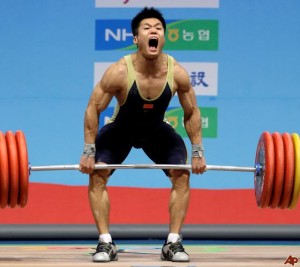 Some exercises are very good at eliciting high activations in certain muscles. Some exercises create very high torques in certain joints. Some exercises are more similar in the movement pattern you’re seeking to improve compared to other exercises. Certain exercises stress different regions of force accentuation due to their varying force vectors.
Some exercises are very good at eliciting high activations in certain muscles. Some exercises create very high torques in certain joints. Some exercises are more similar in the movement pattern you’re seeking to improve compared to other exercises. Certain exercises stress different regions of force accentuation due to their varying force vectors.
Some exercises heavily stress one joint and spare other joints (for example, the lumbar spine).
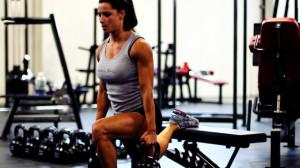 Due to different torque-angle curves, some exercises are better at inducing metabolic stress (pump and burn) than others, some exercises are better at damaging muscle fibers than others, and some place more average or peak tension on the fibers. Some are better suited for shifting the optimal length that muscles produce their force at to longer lengths; others to shorter lengths. Accommodating resistance can be used to shift the torque-angle curve to greater production at shorter muscle lengths and increase the time spent accelerating the load.
Due to different torque-angle curves, some exercises are better at inducing metabolic stress (pump and burn) than others, some exercises are better at damaging muscle fibers than others, and some place more average or peak tension on the fibers. Some are better suited for shifting the optimal length that muscles produce their force at to longer lengths; others to shorter lengths. Accommodating resistance can be used to shift the torque-angle curve to greater production at shorter muscle lengths and increase the time spent accelerating the load.
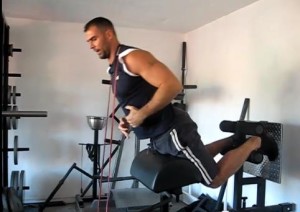 Full ROM movements trump partials and isoholds, but this doesn’t mean that partials and isoholds should never be employed, especially when used in conjunction with full ROM movements. Finally, you have to consider the interplay between the different exercises within a program, as exercises can be synergistic with one another (but they can also be redundant).
Full ROM movements trump partials and isoholds, but this doesn’t mean that partials and isoholds should never be employed, especially when used in conjunction with full ROM movements. Finally, you have to consider the interplay between the different exercises within a program, as exercises can be synergistic with one another (but they can also be redundant).
As you can see, there are plenty more factors to consider than just force, power, or RFD outputs.

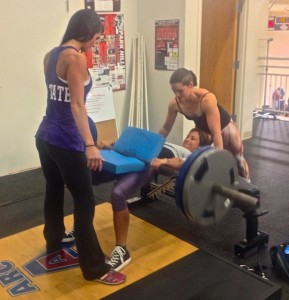





It seems like lots of people like to say some exercises are better than others, especially when it comes to power and plane specific power. However, if your volume of sport training (broad jump, for example) demands a high volume of maximal velocity (unloaded) repetitious movements outside of the gym, does your training inside the gym really need to target plane specific power? Can you train the muscles that are involved in the performance task at hand (broad jump) for general strength/hypertrophy and let the high volume of maximal velocity repetitious movements work on applying that increased CSA at high velocities?
This is a great question Tony and one I’ve thought a lot about. Let me give you three scenarios. Coach one is an ex-powerlifter and just stresses squats and deads in the gym and a bunch of plyos/sprint/agility drills on the field. The athletes get very strong and see amazing results. Coach two is a modern trainer who utilizes fancier methods such as sleds, slideboards, hip thrusts, rotational work, single leg work, etc. His athletes don’t get very strong at anything, but they develop well-rounded strength and see good results. Coach three understands the importance of strength work and gets his athletes very strong at squats/deads, but also knows how to implement plane/vector-specific work to round out the edges. His athletes get very strong and powerful at other things such as hip thrusts, slideboard, GHRs, hex bar jump squats, kb swings, and medball rotary work. These are the athletes who will see the best results IMO. Options 2 and 3 will deliver 90% of results, but it’s the last 10% that is what we’re all after.
The great thing about strength and conditioning is that different coaches can improve performance using different methods and training philosophies. Every strength coach probably thinks their way is optimal, and the common denominator is increased strength. Having scavenged through the literature (this was my starting point http://www.ncbi.nlm.nih.gov/pubmed/14652496), I could not find one study that found power, plane, or velocity specific training to have a greater influence than general strength/hypertrophy training on performance if outside training of said performance was held constant between groups. Although many strength coaches may find this thought appalling, I think it is perfectly in line with basic principles of specificity, complex training, and the force-velocity curve.
Tony, good points. Velocity specificity doesn’t have much support based on what I’ve seen – a prof at AUT named Nigel Harris examined this for his thesis. I haven’t seen studies phrasing “power specificity,” but vj improve vj, sprint improves sprint, etc., probably more so than loaded or unloaded (but combined works best). And with plane specificity there is research supporting the theory but mostly pertaining to plyos and throwing. My guess is that in time we’ll see more research supporting vector specificity. But as always, research is needed to confirm. Great article link btw – Blazevich is a rockstar.
“If it ain’t broke, don’t fix it.” I don’t think there is any arguing that the training you described works. However, to inspire conversation and thought, you are suggesting that you believe in the research that says max velocity training in the gym is not necessary to improve max velocity but for some reason you do think medium velocity training done at max effort (max power) is necessary? What I am getting at is power = force * velocity, so is there really a difference in velocity specificity and my reference in power specificity? Thus, how can you discredit velocity (power) specific training at one end of the spectrum but not at other places on the force-velocity curve where power outputs are greater?
Not max velocity training…velocity specific training. I actually think that all points should be hit for each vector. Low load medium load and high load all with intent to move as fast as possible. Axial and anteroposteror vectors most important. Then rotary and lateromedial. But you can’t do it all. Not enough training time.
You are getting at my current mindset. Nothing is ever more specific than performing the actual sport. If you increased the strength of the muscles involved in your sport, would you encounter a high volume of velocity, and vector specific movements if you performed your sport frequently enough outside of the gym?
Wow, that can make your head spin. But in good way, makes us more open minded and not to think in “absolutes”. Thanks Bret. Quick question as I try to wrap my head around this article. You said “For example, hip power is maximized with a heavier jump squat load compared to the load that maximizes overall power.” What do you mean by hip power is maximized vs. maximizes overall power? Can you give an example of each? Thanks.
Doug, great question. The jump squat shows maximal power outputs with no load (just bodyweight). This is the load that maximizes the product of force and velocity (power = force x velocity). Subtracting load via bands or adding load via weights does not lead to increased power outputs. However, when you examine the individual joints (knees, ankles, hips), you can examine joint power by multiplying the joint torque times the angular velocity. In the case of the jump squat, hip power is maximized when using additional loading. There is some good research showing that training at the load that maximizes power will produce the best results if only training with one load. But combined training almost always trumps one particular method. Therefore, I believe that it would be wise to perform some jump squats with bodyweight and with additional loading, as well as heavy squats. However, I actually think that jump squats should be used to maximize knee power as other movements such as hang cleans and kb swings would show greater hip power outputs, so that’s a different topic altogether. As you can see, everything is valuable, but the trick is to learn how to pull it all together because when you try to do everything you spin your wheels.
Bret says… “Coach one is an ex-powerlifter and just stresses squats and deads in the gym and a bunch of plyos/sprint/agility drills on the field. The athletes get very strong and see amazing results. Coach two is a modern trainer who utilizes fancier methods such as sleds, slideboards, hip thrusts, rotational work, single leg work, etc. His athletes don’t get very strong at anything, but they develop well-rounded strength and see good results. Coach three understands the importance of strength work and gets his athletes very strong at squats/deads, but also knows how to implement plane/vector-specific work to round out the edges. His athletes get very strong and powerful at other things such as hip thrusts, slideboard, GHRs, hex bar jump squats, kb swings, and medball rotary work.”
Interestingly enough, both Carl Lewis & Kadour Ziani didn’t even come close to going down this road. I in no way believe it all comes down to just genetics. Maybe wise to keep an open mind?.
http://www.youtube.com/watch?v=aTD_D0cWxNY
Andy, Carl lifted weights, contrary to popular opinion. But regardless, Carl only needed to go forward (sprinting) and Kadour only needs to go upward (jumping). Neither needs agility or rotary power, or to be strong at all ends of the FV curve (maximal strength, strength-speed, speed-strength, and speed). For the well rounded athlete, all of these are needed. Also, there is tons of support in literature for RT and power improvements. It works on the vast majority of athletes from beginners to elite. Nevertheless, it’s good to examine how great athletes train.
Carl Lewis was quoted as saying that the year he lifted the most, was the year he performed the worst. The fact is that Carl Lewis did very little weights from 83-93. From 93 onwards he did do conditioning weights in the off-season but nothing major. His lifting ability was supposedly poor.
“Neither (Kadour/Lewis) needs agility or rotary power”.
Isn’t rotary power the same as torque production?. I thought sprinters generate huge amounts of torque?.
Also, how do you define agility?. Kadour Ziani to me, if you look at some of his dunks, seems to have incredible agility.
I have Ziani’s DVD, he devotes so much of his time to stretching which he seems to be doing 3x a day.
Andy, out of curiousity have you ever read any journals on S&C? Researchers devote a great deal of time and energy conducting randomized contolled studies, and there are now hundreds showing increased power from resistance training. This equates to thousands of athletic subjects. It’s a slap in the face to ignore this. It’s a slap in the face to be blind and ignorant to this and form an opinion as I’ve told you this same information in other posts.
Anyway, you seem intelligent and curious so I hope one day you start delving into more literature. Moreover, by now nearly all strength coaches have their athletes weight train. Look at the NFL combine. Freaks are produced. Basing your opinion on Lewis and Ziani isn’t wise. Theyre outliers in terms of genetics, plus perhaps their weight training programming could be modified to produce even better effects. I’ve had some athletes just do one set of things to not interfere with progress and it seemed to do the trick.
Rotary power is whole body twisting torque. Torque in general is just turning force, which can happen at any joint in any of that joint’s directions.
The research is one-sided in that resistance training usually improves sprint acceleration. Perhaps the volume of resistance training was so high that it cut into his volume of sprint training and subsequently impaired his performance.
Great article Bret! Agree with the points you have been making, except for you said the Carl doesn’t need to be strong along the whole F-V curve.
Don’t you think sprinters need to be strong along the whole curve. As you know more than anybody, hasn’t accerlation been correlated most stronlgy to max strength? At the very least accerlation is for sure heavily strength-speed based and the transition from acceleration to top-end speed certaintly touches upon the different spectrums of the F-V curve.
I’m probably nit picking, but I would love to hear your thoughts.
Also to clarify I am not trying to imply RT doesn’t improve power. I just feel sprinters do need strength among the whole force velocity curve, not just towards the speed end of things.
Tony makes some great points, but I side with you Bret. I thin of the 3 coaches you described, #3 is going to win out the majority of the time. There are many limitations to only training F (Left side of curve) and assuming that our athletes outside volume will cover the V (Right side of curve). Initial thoughts would be:
1) Athletes are often not cued for maximal velocity during practice, so we should do the work with them in the gym.
2) Max force has a weak correlation with RFD. This is important being that it takes .04+ seconds to produce max force, .06 seconds to perform squat(which could take longer when fighting at 90%+), but it takes only .01-.02 seconds to perform explosive athletic movements (e.g. jump, swing a bat, etc.). This implies that training max force is not enough.
3) Though research is limited, there is support for plane specific power training (1,2,3).
4) We cannot train for strength (>85% 1RM) year round, and power/speed training gives us an option in season to maintain strength.
5) Making an athlete stronger will not always transfer to the field (see Andy’s post above).
6) “If it aint broke dont fix it” does not mean its optimal and I think we can be smarter than just making our athletes lift heavy (increase F) and hope that they increase speed (increase V) resulting in increased power (P=FV).
7) Practitioners get results by training the entire speed strength continuum, as well as plane power work, and research will catch up soon. We drive the research, not the other way around. If we were to wait for research to validate our programs we would still be doing aerobic work.
8) We have to think outside the box to be innovative. Sure increasing F will increase P, but can we increase P to a greater extent if we train, strength (F), strength speed, speed strength, and speed (V).
9) Under Tony’s recommendations we would only need to do powerlifting (bench, squat, deads) and we can make better athletes. This would work only for powerlifters.
10) This power and plane specific work allows us to bridge the gap from the gym to the field, making sure our increased strength transfers to better jumps, swing, etc.
References:
1) http://journals.lww.com/nsca-jscr/Abstract/2007/11000/Effect_of_Torso_Rotational_Strength_on_Angular.24.aspx
2) http://journals.lww.com/nsca-scj/Abstract/2010/08000/Medicine_Ball_Training_Implications_for_Rotational.1.aspx
3) http://journals.lww.com/nsca-jscr/abstract/2004/02000/effect_of_an_8_week_combined_weights_and.8.aspx
Ramsey, show me the research that has compared general strength/hypertrophy vs. power and then tested performance of a movement that subjects from both groups have been completing regularly. It’s not that the research is lagging here, it’s that the literature is not painting the picture you want it to paint.
Tony, can you find the research? You claim its not lacking here but yet dont have a study. Further, just because the research hasnt been done does not mean it doesnt work. Coaches are doing these studies everyday. Again, if we wait for the research our field will go nowhere. Put yourself in a coaches perspective rather than an academic lab perspective. Our athletes care only about results, not how many references we have for their programs!
The study listed had both groups perform equal amounts of bat swings.
Also, do not ignore all other points made to simply focus on your bias here. The fact is that you cannot train for strength, especially not max force (>85% 1RM) year round. That alone will tell you that we need other tools in our belt! Your belt has the hammer (max strength to increase F), while my belt has the hammer, screw drive, wrench, etc. I believe I am better fit to build the best athlete!
I’m not saying it’s bad to train for specificity. I am questioning it’s efficacy versus non-specific general strength/hypertrophy of the muscles involved in the performance task at hand. The baseball study you keep referencing is not specific power training versus non-specific strength/hypertrophy (I actually think that exact study design would have answered this question if they did include a non-specific strength/hypertrophy group). I think the evidence suggests it is not NECESSARY to train that way. http://www.ncbi.nlm.nih.gov/pubmed/14652496 read this article and the articles that are listed towards the end of the discussion. Having said that, I train for specificity just because it is a fool-proof way to ensure the muscles I am trying to target are indeed targeted. In no way am I saying that training for specificity does not work, but I do not think it is necessary if you are also performing your sport frequently enough.
Great reply Tony. We all need to be open-minded and wait for emerging research (or at least piece together future research that examines parts of the puzzle).
Tony, I read that study and have already gave you my thoughts on that 1. The sprint group saw equal changes, meaning that strength training doesnt work at all. This counters your own argument! Further, A squat is sport specific enough, the literature referenced at the end is a single study that we have agreed flies in the face of what we know. This study does not look at the power argument you present. Though this study might have been done by a “rock star” as far as Im concerned its irrelevant to our discussion.
There is no study out there comparing training swings for strength (via Keiser) vs power (via Med ball). Also, as I posted 10 points, and research is only # 3, please see 1,2, 4-10. Especially #2! Even if it is not more efficient, there is no harm in doing it (as long as its not less effective). But given that very intelligent strength coaches are doing this stuff (e.g. Eric Cressey and my mentors in the NBA) I favor the use. Your argument is both 1) we dont need to do specific plane power movements and 2) we dont need to do power training at all. Both of which I disagree with. Given the fact that there is not a single study that has looked at what we are discussion, we have only our own experiences as coaches to fall on. I have put in the time in the trenches to see this stuff work, and I think pubmed will soon have the studies youll need to agree. Until then all I can do is continue to experiment with my clients and athletes. Keep in mind these studies do not take a couple years to get published either!
Tony, you are suggesting we only need to squat, deadlift and bench! This would be non-specific general strength/hypertrophy of the muscles involved in the performance task at hand. I must humbly disagree with you on that give my points above, injury risks, boredom, athlete compliance, etc. etc. The list goes on. Though this is a great way to get strong, this is only one side of the curve and not most efficient for building athletes! We can settle this over a beer thursday night, though it does not appear we will be seeing eye to eye!
I think RFD is the end result that you want to look for for athletes. How you get there is the best question. Just because the lift has a higher rate of force developement does not mean it will produce the results your looking for. Breaking down dynamic muscle contraction, like Cal Dietz did in Triphasic I really belive is right on the money for programming considerations.
Agree. RFD and impulse are paramount, and combined training gets you there most efficiently.
E- Fist bump
Exactly, see my point #2!
Bret
A couple of days late to this conversation, but if you are still reading – do you think there is any difference between training ‘max’ type sports (power, speed etc) and those requiring less than max (but more than pure aerobic). In my case its surfing, where there is quite a bit of debate over how to train for paddling (generally you paddle at, say, 50-70% of max, but with brief periods of 100%). But a sport like middle distance running (800m) or swimming (400m) is probably similar – you need some power, some speed but also some endurance.
Or is there not much difference – you still resistance train for max performance, then pick up the endurance through other means?
I’m 15 years old, 6’1″, and 180 lbs. My bodyfat is relatively low, sub 13%. But that’s kind of beyond the point. I’m trying to become a better athlete in all fields, especially explosiveness and rate if force development, because I can’t dunk a basketball on a regulation rim. I should be able to though, it makes no sense at all to me. My levels of strength are relatively high for my age. I have a 1RM on the squat of ~380lbs (320×7 or 325×6). I squat high bar full depth, I squat legitimately, a lot of teen stats in sports are hugely inflated because of lack of proper ROM, but my squat is legitimate. I really need to jump higher and get more explosivr though guys. Any help is appreciated. By the way I have been squatting for around 2 years now, did Smolov, did 3×5 and 5×5, currently on 3×6 moving up 5lbs a week.
I know that Power= High Levels of Force x High Sped of Force Application
with partial and assisted squats you are able to lift heavier weights and max out your PRs you’ve never had before right? Results maybe valid, but I could argue that if the group that did partial range of motion maxed out there PR everytime then they could have more gains.
responses are welcomed of course since i’m also on the journey of improvement